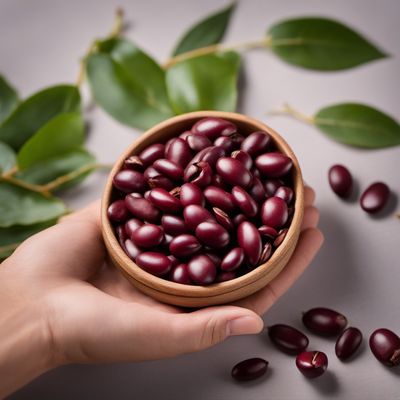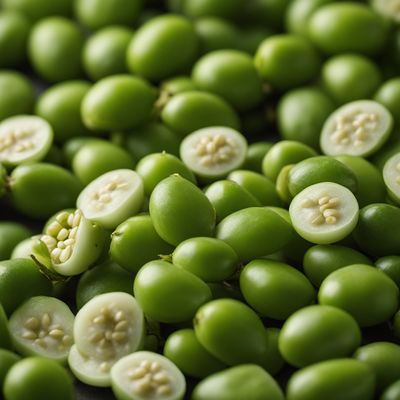
Ingredient
Black eyed peas (with pods)
The Versatile Delight: Exploring the World of Black Eyed Peas with Pods
Black eyed peas with pods are small, cream-colored legumes that are encased in long, green pods. The peas themselves have a smooth texture and a slightly nutty taste. The pods are tender and can be cooked along with the peas, adding a subtle sweetness to the dish. These peas are often used in soups, stews, salads, and side dishes, as they absorb flavors well and provide a satisfying bite. Their appearance adds visual appeal to any dish, with the vibrant green pods contrasting against the pale peas.
Origins and history
Black eyed peas are believed to have originated in West Africa and have been cultivated for thousands of years. They were brought to the Americas during the transatlantic slave trade and became an integral part of African American cuisine. Today, they are enjoyed worldwide and are particularly popular in Southern United States, India, and the Caribbean.
Nutritional information
Black eyed peas with pods are a nutritious ingredient, rich in fiber, protein, and essential vitamins and minerals. They are low in fat and calories, making them a healthy addition to any diet.
Allergens
Black eyed peas with pods are not commonly associated with allergens, making them a suitable choice for most individuals.
How to select
When selecting black eyed peas with pods, look for fresh, vibrant green pods that are free from blemishes or discoloration. The pods should feel firm and snap easily when bent. Avoid pods that are wilted or have brown spots, as they indicate age or spoilage.
Storage recommendations
To maintain the freshness of black eyed peas with pods, store them in a perforated plastic bag in the refrigerator. They can be kept for up to a week. If you prefer to store them for a longer period, blanch and freeze the pods for later use.
How to produce
Black eyed peas with pods can be grown in a home garden by planting the seeds in well-drained soil and providing adequate sunlight and water. They are relatively easy to grow and can be harvested when the pods are plump and the peas inside are fully developed.
Preparation tips
To prepare black eyed peas with pods, start by removing the peas from the pods. Rinse them thoroughly under cold water to remove any dirt or debris. They can be boiled, steamed, or sautéed, depending on the desired texture. The pods can be cooked along with the peas or used separately in stir-fries or salads. To enhance their flavor, consider adding spices, herbs, or aromatics during the cooking process.
Culinary uses
Black eyed peas with pods are commonly used in soups, stews, and curries. They can also be added to salads, rice dishes, or used as a filling for vegetarian patties. The pods can be stir-fried or pickled for a crunchy and tangy addition to various dishes.
Availability
Black eyed peas with pods are commonly available in regions where they are cultivated, such as the Southern United States, India, and parts of Africa and the Caribbean.
More ingredients from this category » Browse all

Azuki beans (with pods)
The Versatile Azuki: A Nutrient-Packed Legume with a Crunch

Soyabeans (with pods)
The Mighty Legume: Exploring Soyabeans (with Pods)

Mat bean (young pods)
The Green Gems of Legumes

Vetches (with pods)
The Versatile Vetches: Pods Packed with Potential

Sword bean (young pods)
The Versatile Bean of the Tropics

Rice beans (with pods)
The Versatile Delight: Exploring Rice Beans with Pods

Mung beans (with pods)
The Versatile Green Gem

African locust bean (with pods)
The African Umami

Stink beans (with pods)
The Pungent Delicacy: Stink Beans

Black gram (young pods)
The Green Delicacy: Black Gram Young Pods

Jack beans (with pods)
The Versatile Legume: Jack Beans with Pods

Yardlong beans (with pods)
The Versatile Veggie: Exploring Yardlong Beans